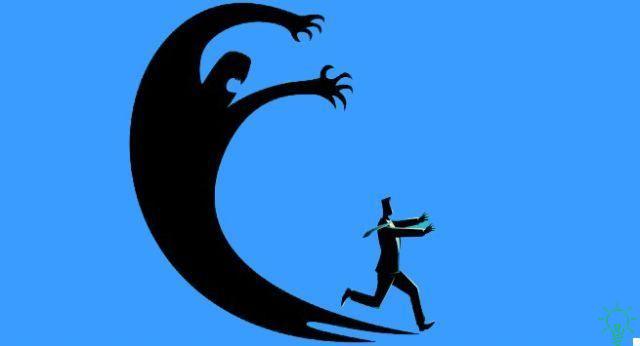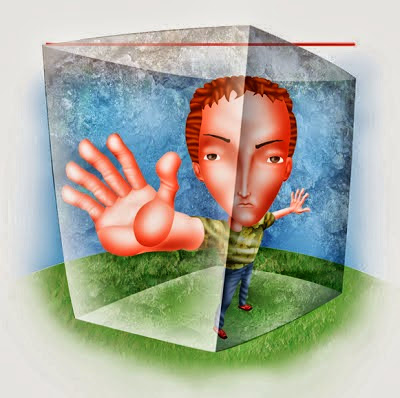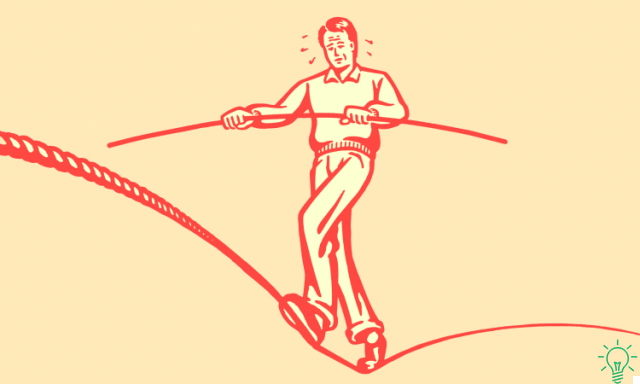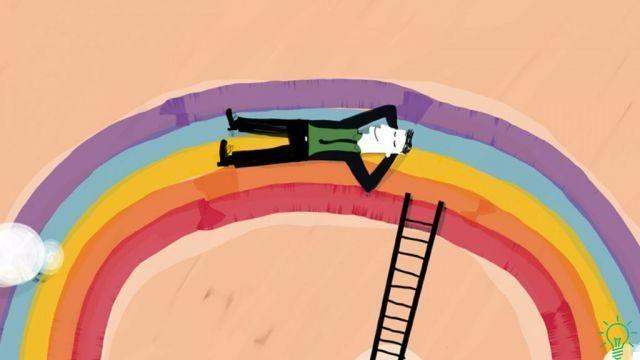
Anxious thoughts run their own course, as if they have a life of their own. You want to stop worrying but you can't. You want to stop feeling apprehensive but it is impossible for you. As a result, anxiety ends up plunging you into a spiral marked by irrational fears, unfounded expectations, and erroneous generalizations.
To get out of this vicious circle it is essential to know and understand anxious thoughts, to know what mental cards are played by anxiety and to defeat it in its territory. This "battle" must begin with the belief that anxiety does not eliminate future problems, but absorbs present energies.
The terrible trap of selective attention
To understand how anxious thoughts work, you can imagine that there are "anxiety lenses". When you wear these lenses you cannot avoid seeing the world through them, which means that you perceive and process the stimuli of the environment in a distorted way. These distortions generate generalizations and emotional reactions that further increase anxiety.
In practice, the anxious mind automatically focuses on stimuli it considers threatening. The problem is that it sets in motion a selective attention mechanism whereby it focuses only on the most negative part of what is happening, ignoring anything that can be positive or comforting.
The threatening interpretation of reality
Since the anxious person sees the world through these "anxiety lenses," they end up over-evaluating the threats. The anxious mind will interpret a noise in the middle of the night with a killer entering the house, the bad mood of the partner as an unequivocal sign that the relationship is about to end.
Anxiety alters the processing of stimuli to the point of considering them irrational threats. Ambiguous or harmless events are also interpreted as possible threats that increase the alert level. For the anxious person, no place is safe, because his mind is constantly on the lookout for danger. Obviously, living in this anxious state ends up presenting a hefty bill, both physically and emotionally.
The profound intolerance of uncertainty
One of the main problems with wearing "anxiety lenses" is that you will not see the signals that convey confidence and are incompatible with your worries and the threatening interpretation you have already made. In practice, the anxious mind rejects any signal that implies a cognitive dissonance with its way of interpreting what is happening. Therefore, he will not see that although the partner is in a bad mood continues to love him, his attention will focus only on the threat of separation.
Basically, the anxious person has great difficulty dealing with uncertainty and seemingly contradictory information. When someone is suffering from anxiety, they feel they have nothing to hold on to, that there is nothing solid. This feeling of instability drives him to frantically seek safety, and while it may seem contradictory, he finds it in the thought that the world is a threatening place. In this way he eliminates the cognitive dissonance because it subordinates his perceptions to his feelings and thoughts.
The wrong generalizations
The anxious mind tends to draw hasty conclusions, acts impulsively without realizing that the lenses through which it sees the world are distorted. As a result, it is normal for it to arrive at erroneous generalizations that further increase the level of anxiety.
To understand how an anxious person thinks, we can imagine that all dangers, real and imaginary, are oversized in his world. The anxious person has few average terms. If a friend tells him that a dog has bitten him, he will think that all dogs are dangerous. If his partner left him in the past, he will think that no one is reliable. The anxious mind generalizes specific events by turning them into a latent threat, so it is not strange that the person lives in a constant state of alarm and always waiting.
Excessive concern for the future
As a result of these erroneous generalizations, worry becomes one of the main symptoms of anxiety. In an ideal scenario, worry would help us solve the problem as it would spur us to prepare for any setbacks and plan the steps to follow. But in the anxious mind, the worry is totally counterproductive because it leads nowhere but keeps the person in the usual recurring anxious thoughts.
And what is even more serious is that concern for the future is usually vague and widespread. The anxious mind anticipates that something bad will happen but does not know what or when. He knows he has to protect himself, but he doesn't know how to do it because he doesn't know the danger. The anxious person worries about his abilities, for example when he has to give a speech, and thinks about everything that can go wrong, but does not make an effort to prepare for everything to go well. This triggers a state of permanent mental turmoil which tends to produce severe exhaustion.
The feeling of not being up to par
As a final point, the anxious mind closes the vicious circle by making the person believe that he will not be able to cope with problems or adversity. The anxious person has low self-efficacy, which means that they do not trust their abilities and potential to meet the challenge. If that person considers themselves weak and incapable, they will worry more about the negative results than to work out a strategy that allows them to get out of the abyss they are in.
The greater the doubt about his level of competence, the greater the worry, and this tends to give way to learned helplessness. The anxious person facing an exam, for example, will worry about failing it. Eventually he will end up thinking that he cannot get over it and, as a result, he will not study hard enough. Thus the anxious mind ends up creating a self-fulfilling prophecy by ratifying a catastrophic worldview.
The result is defensive and avoidant behaviors
The anxious person usually has an external locus of control, thinks the problem is "out there". Therefore, it will resort to several defense mechanisms to move the real problem out of itself. Because of these self-defensive strategies he ignores the real cause of the problem, which he always attributes to others: anxious parents, a very stressful job or a busy society. Any excuse is good for not taking responsibility and implementing new strategies that will help her treat anxiety.
In fact, anxious people are often true masters of avoidance. Avoidant behaviors are a classic strategy for dealing with anxiety, so the person postpones the problem they are facing or resorts to distraction to avoid thinking of a solution. Obviously, procrastination, in the long run, aggravates the problem and generates even more anxiety.
But there is a solution
The good news is that understanding anxious thoughts involves unmasking anxiety and, therefore, is the first step in eliminating it. This book to fight anxiety will guide you step by step.


























